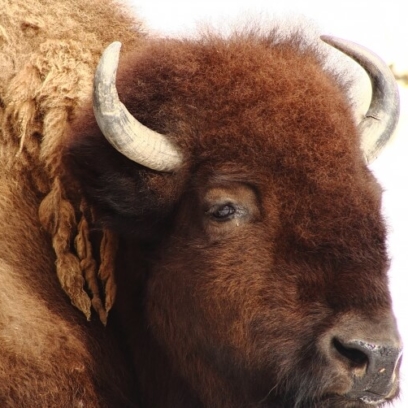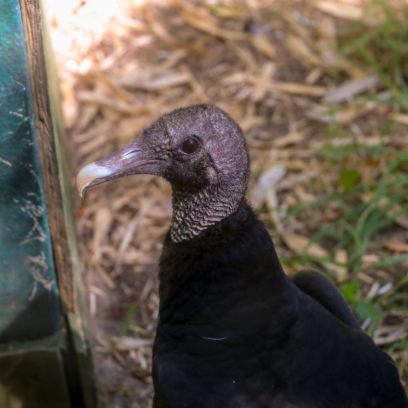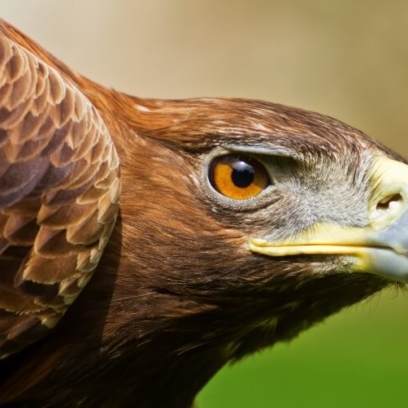Bald Eagle
Haliaeetus leucocephalusGeographic Region: northern United States and Canada, near lakes and large rivers
Did You Know? The bald eagle can be found in every state in North America, except for Hawaii. The Roger Williams Park Zoo is home to two rehabilitated bald eagles – each unable to be released back into the wild as a result of wing injuries leaving them unable to fly. The Zoo’s bald eagles are animal ambassadors for their species and teach visitors about the importance of conservation.

There’s More to the Story
In the United States, there is no greater conservation comeback story than the bald eagle. Known for its majestic beauty and strength, the bald eagle has been an American symbol since 1782 when it became the national emblem. An estimated 500,000 bald eagles soared the skies of North America during the 18th century. Unfortunately, as time followed, these numbers began to diminish due to hunting and habitat loss. By 1940, a law was created, now known as the Bald and Golden Eagle Protection Act, making the killing of bald eagles illegal. Nonetheless an even greater threat lurked within the shadows. Soon DDT – an insecticide with widespread use – was developed and introduced to the public. Over the next two decades, the eagle’s populations plummeted.
By the mid 1950s, less than 500 nesting pairs of bald eagles remained. The widespread effectiveness of DDT created a boost in popularity, while its adverse side effects on wildlife and the environment became apparent. As DDT residue would wash off agricultural fields and into aquatic ecosystems, the pesticide worked its way up the food chain. Soon bald eagles and other large predatory animals across the country were eating contaminated fish. Chemicals from DDT caused the bald eagles to lay eggs with brittle shells so thin that they did not survive. Facing the very near demise of the national symbol of the United States, the bald eagle joined the Endangered Species list in 1967. With continued habitat loss and DDT poisoning, the Environmental Protection Agency sprang into action and in 1972 the Unites States banned the use of DDT. Thanks to the ban, the bald eagle set forth on its long road to recovery. By the 1990s, eagle populations soared to more than 5,000 breeding pairs.
In 2007, after a supportive effort from numerous conservation initiatives from around the nation, the bald eagle was removed from the Endangered Species list. The bald eagle has seen a remarkable population rebound, as stringent protections continue to exist today. While the fight for freedom continues – due to the ever-present threat of human encroachment on habitat and the introduction of new toxins – we can be proud of the concerted effort that has brought back our national emblem from the brink of extinction.
Details
Height: 2.5 – 3 ft.
Weight: 10 – 14 lbs.
rats and other small mammals
Least Concern
Wild Woodlands
Exhibit information
Discover the amazing creatures that call North America home! Watch the bison graze, the pronghorn demonstrate their speed, and the wild turkey show off his courtship displays! You can even spy the only two venomous snakes in New England–the northern copperhead and timber rattlesnake, and learn about their crucial role in the ecosystem. Most of the species within the North American section are great conservation success stories, including the shy red wolf.
Red wolves were listed as Extinct in the Wild by 1980. Through the collaboration of the US Fish & Wildlife Service and the Associations of Zoos and Aquariums’ (AZA) Red Wolf Species Survival Plan (SSP), the last 14 remaining wild red wolves were brought into zoos to establish a captive breeding program with the primary objective of forming the foundation of a wild population through reintroduction back to the wild. Even though breeding is a main component, our red wolves also help educate the public on the plight of their wild counterparts.
Thanks to the collaborative efforts of these partner facilities across the United States, the captive red wolf population has once again risen steadily to nearly 250 wolves! Learn all about how these animals have been saved from extinction.




